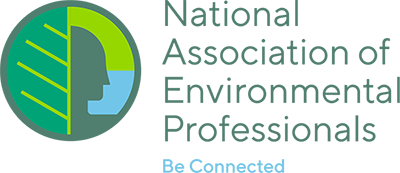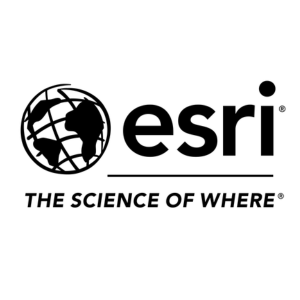|
Session C5.1
Using a Resource Equivalency Analysis (REA) to Preserve Resilient Corals in Miami Beach
Jennifer Savaro
9:30 – 10:00 AM ET
| About the Presentation |
|
As a sub-consultant E Sciences provided environmental analysis and documentation to support the studies performed by the Miami-Dade County Department of Transportation and Public Works to satisfy the NEPA requirements for federal funding and to obtain environmental permits for a new elevated transitway across Biscayne Bay. The Beach Connector is intended to increase the person-throughput to major origins and destinations via a rapid transit technology.
The project will provide a transit connection between downtown Miami and Miami Beach. To assess impacts to corals that may result from this project, E Sciences' marine biologists conducted a representative coral survey. As part of the permitting process, consultation with the National Marine Fisheries Service (NMFS) and Fish and Wildlife Conservation Commission (FWC) occurred to address the coral impacts associated with the project. Florida's coral reefs have been experiencing an outbreak of a coral disease, termed Stony Coral Tissue Loss Disease (SCTLD). The corals along the project corridor were determined to be resilient to SCTLD. To determine the functional impacts to Essential Fish Habitat (EFH), E Sciences in further coordination with NMFS, prepared a National Oceanic and Atmospheric Administration (NOAA) Resource Equivalency Analysis (REA), instead of a traditional Habitat Equivalency Analysis (HEA) to identify the amount of mitigation required to offset adverse impacts to resources found in the low-relief hardbottom, including corals, octocorals and sponges. The REA is used as a tool to equate the estimated loss of services resulting from an impact to a resource, along with predicting the estimated gain in services resulting from mitigation. Additionally, a coral relocation plan and coral mitigation plan were prepared in conjunction with regulatory agency input to preserve the highly resilient corals and as an avoidance measure. Resilient corals will be out-planted in coral reefs offshore and within other areas of Biscayne Bay with the intent of propagating this disease-resilient strain of coral. This presentation will discuss the technical and regulatory challenges faced and how those hurdles were overcome.
|
| About the Speaker |
|
 Jennifer Savaro Jennifer Savaro
Project Scientist II
E Sciences Incorporated
Jennifer Savaro is Project Scientist II specializing in natural resource assessments and permitting, based in E Sciences' Dania Beach office. She has over nine years of professional experience. She provides numerous ecological services to clients, including marine and estuarine habitat assessments and permitting, upland habitat assessments, coastal habitat assessments, wetland delineation, function evaluation, protected wildlife assessments and permitting, NEPA document preparation, and GPS data collection and GIS mapping. Jennifer is the past president of the South Florida Association of Environmental Professionals (SFAEP) and the current secretary for the Florida Association of Environmental Professionals (FAEP).
|
Session C5.2
Making Nature-Based Solutions Possible with Hazard Mitigation Funding
Chris Levitz, PE
10:00 – 10:30 AM ET
| About the Presentation |
|
Nature-based solutions utilize nature, open space, and ecosystems that can provide multiple benefits to communities, including protection from natural hazards. The FEMA Hazard Mitigation Assistance (HMA) programs present a crucial opportunity to reduce the risk to communities from natural hazards, while simultaneously reducing communities' overall reliance on Federal disaster funds. The HMA program includes three grant types for pre-and post-disaster mitigation projects that reduce loss or damage to life and property. All three HMA funding streams encourage nature-based solutions as eligible project types to provide hazard mitigation, while also supporting communities' environmental, social, and economic goals.AECOM is working with The Nature Conservancy, as well as local communities, to further a collective understanding and approach to capturing FEMA hazard mitigation funding for nature-based solutions. The Nature Conservancy and AECOM have developed a guidebook to help communities plan, apply for, and fund nature-based solutions to flood and wildfire risks. This guidebook is a complementary tool to the guidance provided by FEMA, working to better align communities that desire long-term hazard mitigation through nature-based solutions with the opportunities to fund their implementation. As nature-based solutions offer many benefits beyond traditional quantified benefits, it can be challenging to identify a path forward towards funding. This presentation will define the role that nature-based solutions play in risk reduction and explain how nature-based solutions are a path towards improving long-term resilience using the HMA program. Identifying applicable solutions and associated funding requires a comprehensive approach from initial conception through the full decision-making process.
|
| About the Speaker(s) |
|
 Chris Levitz, PE Chris Levitz, PE
Gulf Coast - Coastal Engineering and Resiliency Manager
AECOM
Mr. Levitz serves as the Gulf Coast Coastal Engineering and Resiliency Manager, specializing in resilience planning and design, with a strong coastal and flood risk focus. With significant flood risk analysis and design projects for federal agencies, state agencies, and NGO's, he has made consensus-building with communities a priority, working to align community development goals with ecological and long-term climate change needs. Developing approaches to merge green and gray infrastructure for a more resilient and adaptable community future, he brings these elements into the planning and design process resulting in multiple award-winning projects, including large-scale master planning with the Texas Coastal Resiliency Master Plan.
 Taylor Tharaldson Taylor Tharaldson
Climate Ecologist
AECOM
Tayler is a Climate Ecologist with over seven years’ experience including widespread research and planning expertise. She has collaborated on numerous climate adaptation and resiliency initiatives over the past 6 years, enhancing her technical knowledge, and analytical and communication skills. Her project work at AECOM focuses on climate change ecology, more specifically, ecosystem vulnerabilities to changing climatic conditions, adaptation planning, best practice management recommendations, hazard mitigation through the use of nature-based solutions, ecosystem services, land-use conservation, ecological restoration, and advance mitigation planning frameworks for future, planned infrastructure projects.
|
Back to Schedule
|

 Jennifer Savaro
Jennifer Savaro Chris Levitz, PE
Chris Levitz, PE Taylor Tharaldson
Taylor Tharaldson

